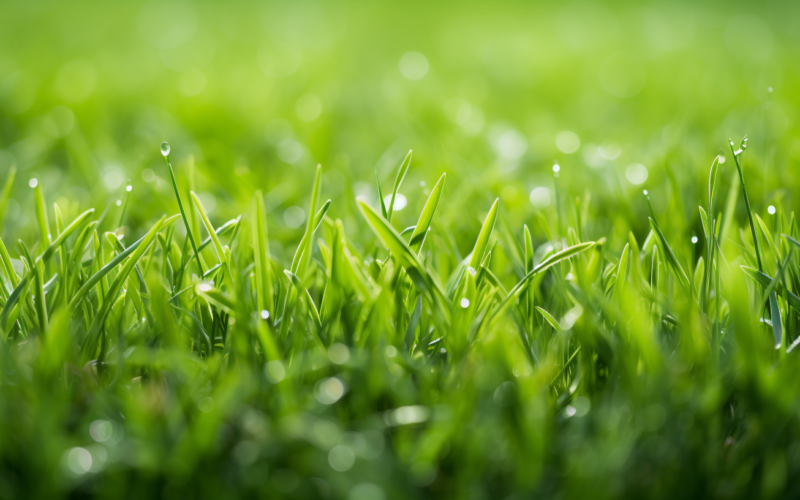A well-maintained lawn is not only a beautiful sight but also a source of pride for homeowners. Achieving a lush and healthy yard requires proper lawn care practices. From mowing and watering to fertilizing and weed control, there are several key aspects to consider. In this comprehensive guide, we will walk you through the essential steps and techniques for maintaining a thriving lawn. Whether you’re a seasoned gardener or a novice homeowner, this guide will equip you with the knowledge and tools to transform your yard into a vibrant green oasis.
1. Soil Preparation and Testing
Before diving into lawn care practices, it’s crucial to understand the importance of soil preparation and testing. Healthy soil is the foundation for a healthy lawn. Start by removing any debris, rocks, or weeds from the area. Then, conduct a soil test to determine its pH level and nutrient content. This will guide you in making informed decisions regarding soil amendments and fertilization.
2. Proper Mowing Techniques
Mowing is a fundamental aspect of lawn care. Follow these guidelines for proper mowing:
- Set the mower at the appropriate height: Different grass types have different ideal mowing heights. Adjust your mower to the recommended height for your particular grass species. Taller grass shades the soil, promotes deeper root growth, and helps prevent weed growth.
- Avoid cutting too much at once: Never remove more than one-third of the grass blade length in a single mowing session. Frequent mowing at the correct height encourages healthy growth and reduces stress on the grass.
- Keep the blades sharp: Dull mower blades tear the grass instead of cleanly cutting it, leading to a brown and ragged appearance. Regularly sharpen the mower blades for clean cuts and a neater lawn.
3. Watering Practices
Proper watering is crucial for maintaining a healthy lawn. Follow these watering guidelines:
- Water deeply and infrequently: Instead of frequent light watering, aim for deep watering sessions that penetrate the soil to encourage deep root growth. Water to a depth of 6 to 8 inches to ensure the roots receive adequate moisture.
- Water in the morning: Watering in the early morning allows the grass to dry before evening, reducing the risk of diseases. It also ensures that the water penetrates the soil effectively without excessive evaporation.
- Use a rain gauge or moisture meter: These tools help you determine when to water. Stick a moisture meter into the soil or use a rain gauge to monitor rainfall. Water only when necessary, based on the moisture level of the soil.
4. Fertilizing Strategies
Fertilizing provides essential nutrients that promote healthy growth and vibrant color. Consider the following fertilizing strategies:
- Understand the nutrient requirements: Different grass species have different nutrient requirements. Understand the specific needs of your grass and select a fertilizer with the appropriate balance of nitrogen, phosphorus, and potassium.
- Use slow-release fertilizers: Slow-release fertilizers provide a steady supply of nutrients over an extended period, reducing the risk of nutrient runoff and minimizing the need for frequent applications.
- Follow the recommended application rates: Over-fertilization can harm the grass and lead to environmental issues. Always follow the manufacturer’s instructions regarding application rates to avoid excessive fertilizer use.
5. Weed Control
Weeds are a common problem that can detract from the beauty of your lawn. Here are some effective weed control strategies:
- Maintain healthy grass: A dense and healthy lawn naturally suppresses weed growth. Follow proper mowing, watering, and fertilizing practices to encourage robust grass growth that can outcompete weeds.
- Manual weed removal: For isolated weeds or small patches, manually removing them by hand or using a tool like a dandelion digger can be effective. Ensure you remove the entire root to prevent regrowth.
- Spot treatments: For larger weed infestations, consider using selective herbicides to target specific weeds without harming the grass. Follow the instructions carefully and apply the herbicide only to the affected areas.
6. Aerating and Overseeding
Over time, lawns can become compacted, which restricts root growth and nutrient absorption. Aerating helps alleviate compaction and improves the overall health of the grass. Here’s what you need to know:
- Determine the need for aeration: If your lawn experiences heavy foot traffic, shows signs of compaction, or has poor drainage, aeration is beneficial. Use a core aerator to remove small plugs of soil, allowing air, water, and nutrients to reach the grassroots.
- Overseeding for a thick lawn: After aerating, consider overseeding to promote a denser lawn. Select high-quality grass seed that matches your existing grass type. Spread the seed evenly over the lawn and lightly rake it into the soil.
7. Dealing with Lawn Pests
Lawn pests, such as grubs, ants, and chinch bugs, can cause significant damage to your grass. Here are some measures to address common lawn pests:
- Identify the pest: Proper identification is crucial for effective pest control. Research common lawn pests in your area and learn to recognize the signs of infestation.
- Implement preventive measures: Maintaining a healthy lawn through proper care practices is the best defense against pests. Healthy grass is more resistant to pest damage.
- Targeted treatments: If a pest infestation occurs, consider using targeted treatments, such as insecticides or biological controls, to address the specific pest problem. Follow the instructions carefully and use the appropriate method for your pest situation.
8. Seasonal Lawn Care
Lawn care requirements vary throughout the year. Consider these seasonal maintenance tasks:
- Spring: Remove debris, dethatch if necessary, and apply pre-emergent herbicides to prevent weed growth.
- Summer: Monitor watering needs and adjust accordingly. Be cautious during periods of drought and consider applying a slow-release nitrogen fertilizer.
- Fall: Rake fallen leaves, overseed if necessary, and continue regular mowing until the grass growth slows down.
- Winter: Prepare your lawn for winter by mowing at a slightly lower height and applying a winterizing fertilizer to strengthen the grass for the cold season.
Conclusion
Achieving a lush and healthy lawn requires a combination of proper soil preparation, mowing techniques, watering practices, fertilizing strategies, weed control, aeration, and pest management. By following the steps outlined in this comprehensive guide, you’ll be well-equipped to care for your lawn and create a vibrant green oasis that enhances the beauty of your home. Remember, consistent maintenance and a little bit of effort throughout the year will result in a lawn that you can be proud of. So, grab your gardening tools and get started on the journey to a beautiful, healthy lawn that will be the envy of the neighborhood.






